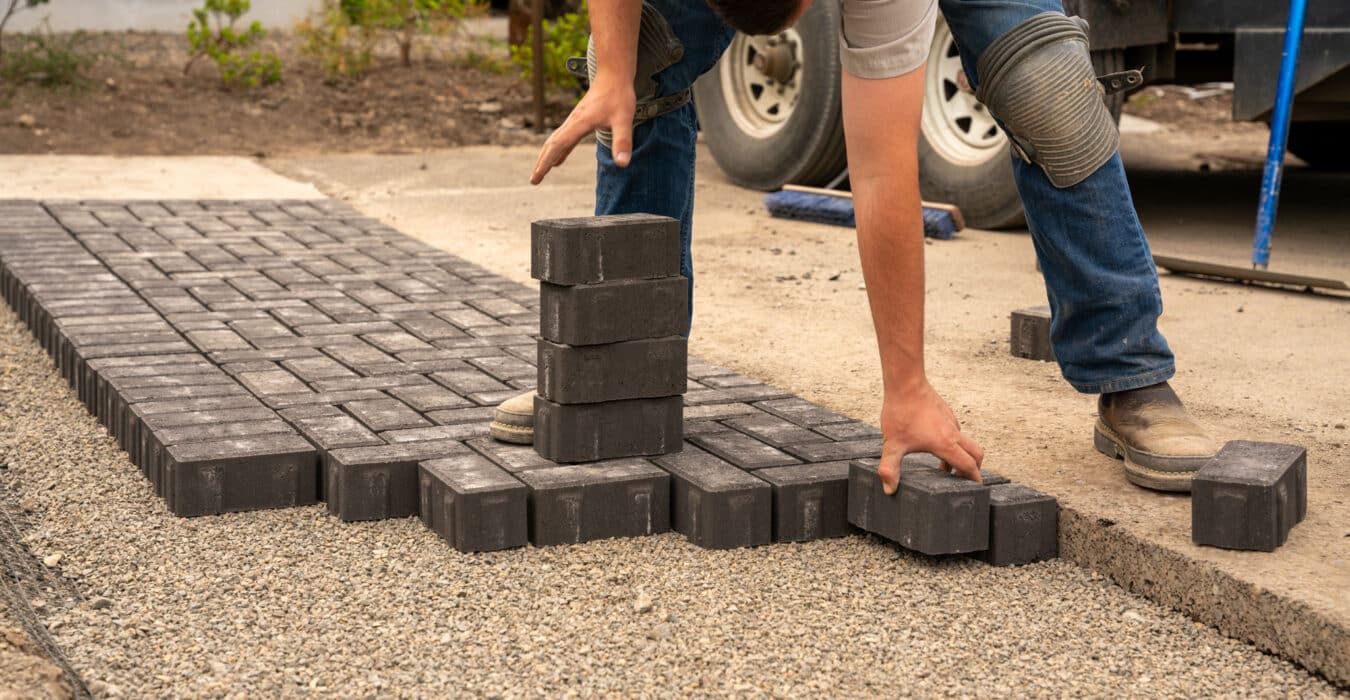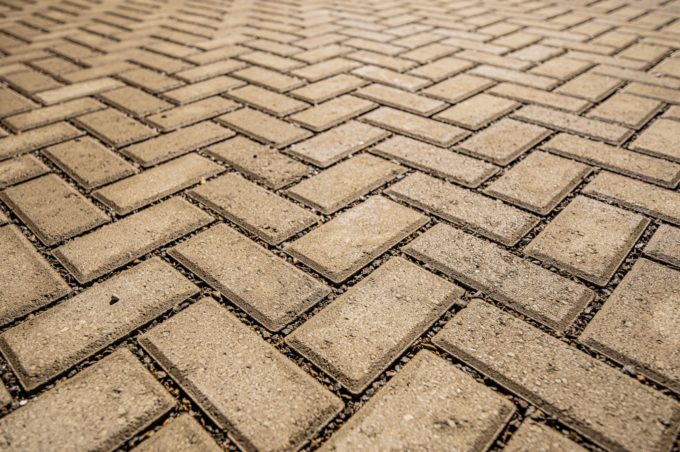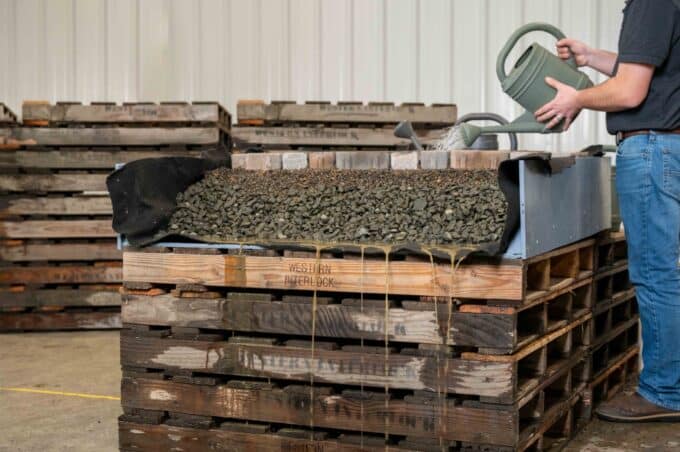Are you a homeowner in the PNW wanting to do a DIY paver project? If so, you may be looking through websites and blogs, researching and trying to glean helpful information before you start.
In this blog post, we’re going to cover the importance of selecting the right base for your hardscape project.
The Pacific Northwest’s Unique Landscaping Needs
Choosing the right base is crucial if you want to have a long-lasting hardscape. Particularly in climates with a lot of cool, damp weather (like in Oregon and Washington), you need to ensure you install pavers that will last in spite of the elements.
Don’t Use Dirt as Your Base
Many DIYers opt to simply use dirt as their paver base because of its low labor requirement—as well as the fact that it is often cheap or free.
If you want your hardscape to last without a lot of movement, don’t use dirt as a paver base.
However, dirt changes as temperatures change. It compresses and shifts, and it will end up being less than reliable or stable as a base.
Three Popular Base Options
1. Concrete Sand: A Common Choice
Concrete sand (also known as sharp sand) is common for paver bases. Its finely crushed particles create reliable drainage, easy compacting, and a stable surface. It is typically readily available and affordable.
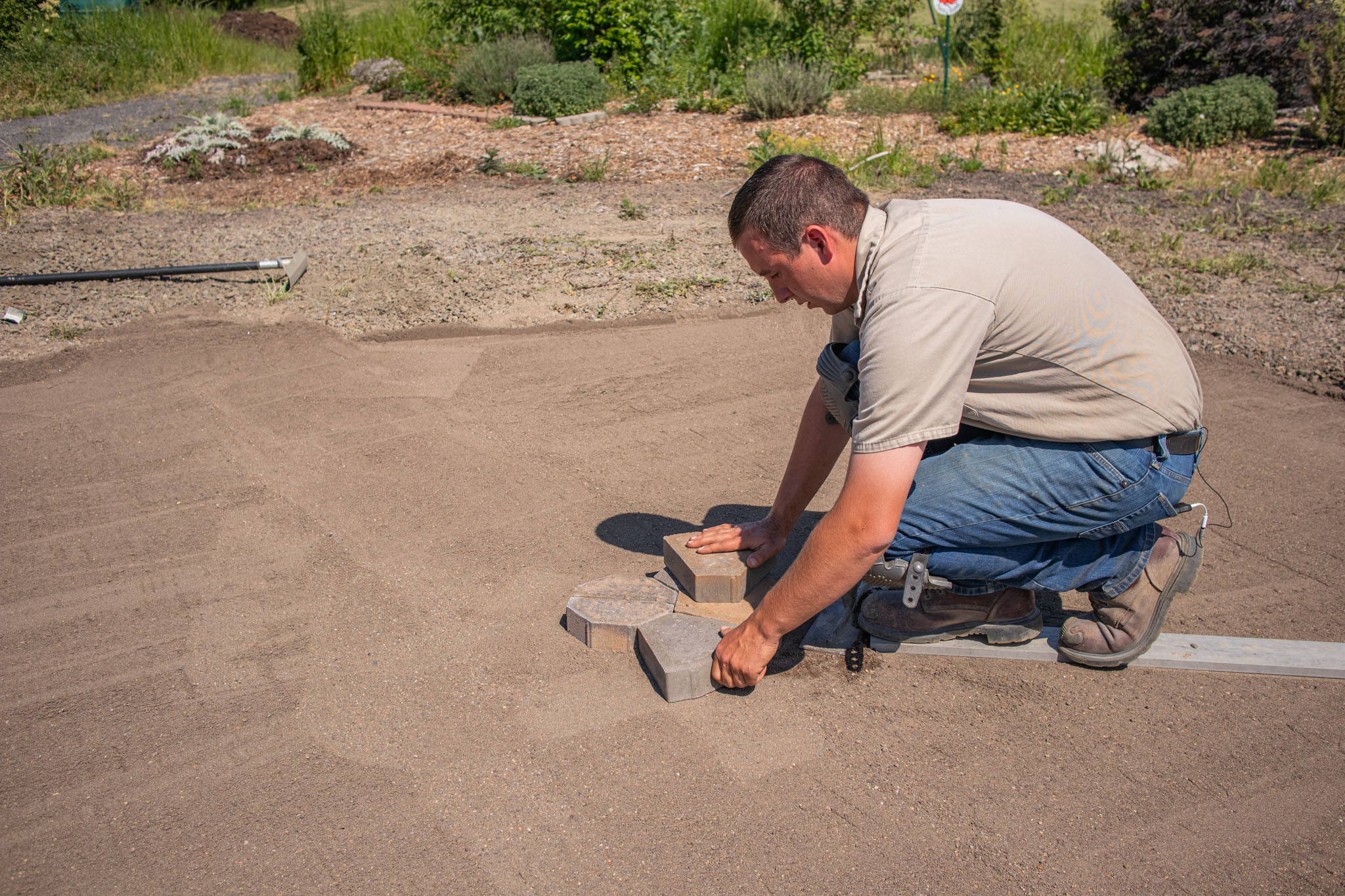
However, while concrete sand is a great option for paver bedding, we don’t often recommend it as a base material because the soil underneath can compress and shift over time. In summary, the best bet is to use gravel as your base and concrete sand as your bedding material.
2. Gravel: The Best Base Material
The best option for your paver base, however, is gravel (¾”-0) or crushed stone (¼”-10). Its ability to drain makes it reliable even in areas with heavy rainfall, and the crushed stones cab double as a solid, reliable bed underneath your hardscape. It is available in various sizes and types, which means it can be customized to suit the specific needs of your project.
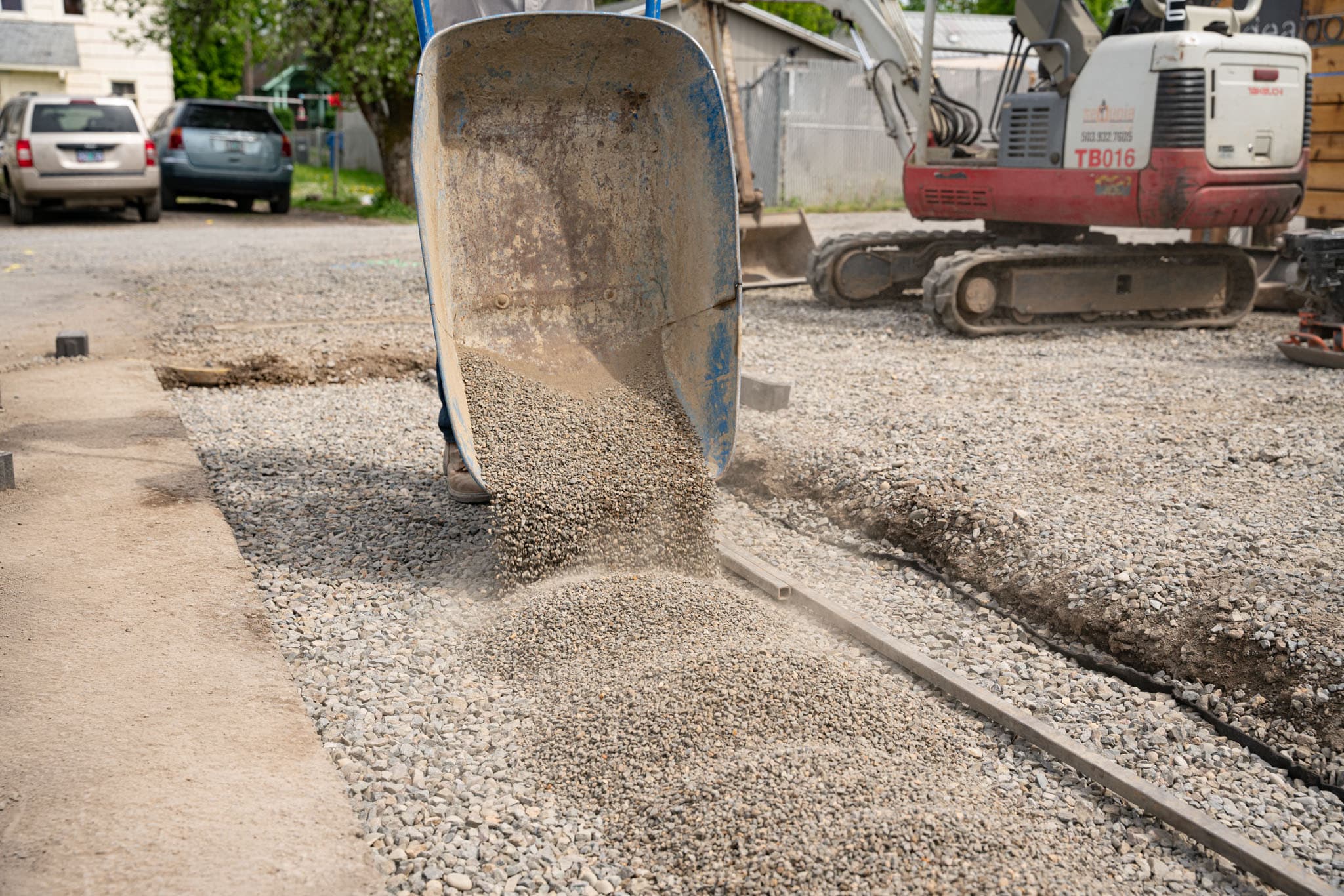
3. Paver Base Panels: A Modern Solution
If you are looking for a modern alternative to sand or gravel, you may want to consider paver base panels. They are lightweight, polypropylene panels that interlock to form a base under your pavers. They reduce excavation, making them faster to install than other base options, and help prevent weed growth while still providing good drainage. Paver base panels are also lighter and easier to work with than traditional bases.
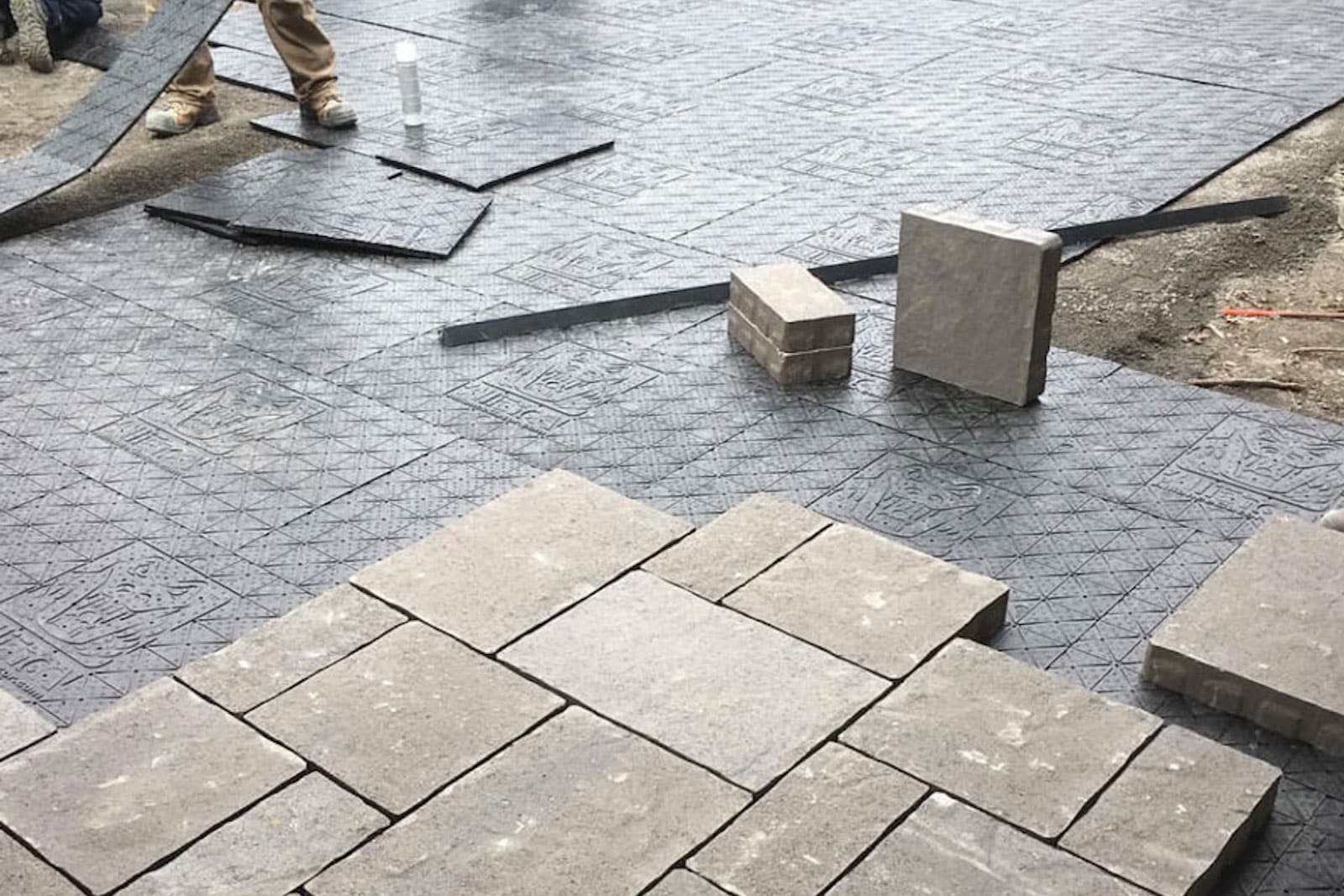
Factors to Consider When Choosing a Base
As you can see, there are multiple factors to consider as you decide what base to use for your pavers. You should evaluate your soil type and drainage ability, the local climate, and the scale and load-bearing requirements of your project. You also should factor in your budget, ease of installation, weed control, and local building regulations.
In the long term, you should make sure your base is also environmentally friendly, durable, easy to maintain, and compatible with your selected pavers for years to come.
Finally, make sure your selected base is available locally so you can get started with paver installation as soon as you wish.
Planning for Success: Introducing the Western Interlock Project Planning Guide
Planning your hardscape project is as important as its execution. Download our free Project Planning Guide so you can review every step of the process carefully before you begin to install your quality pavers.


